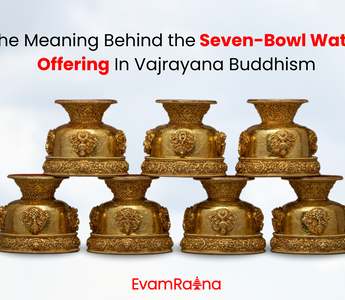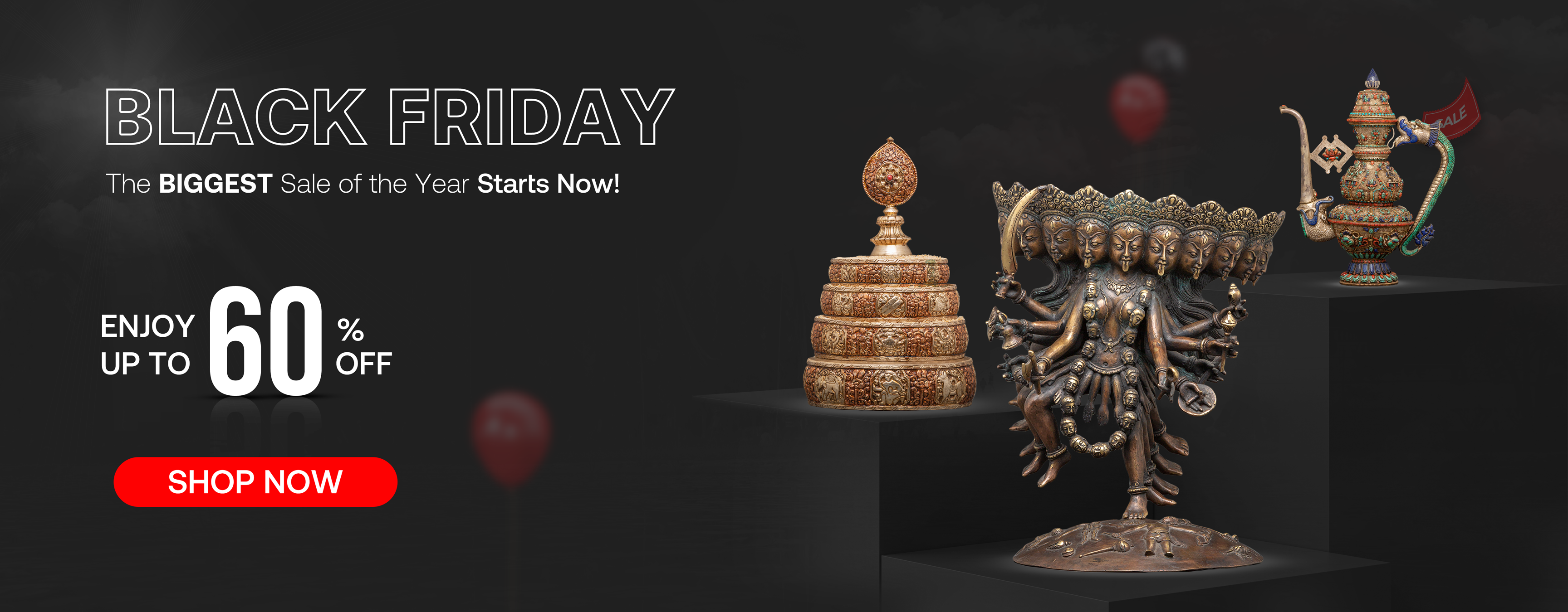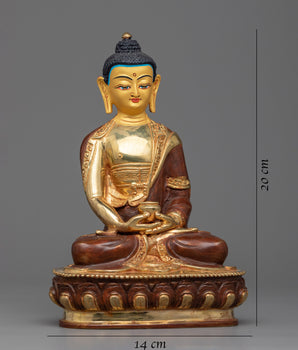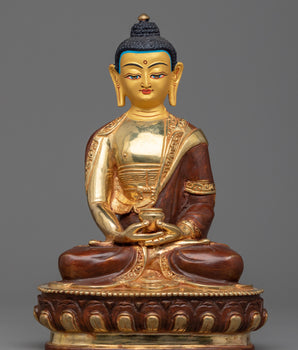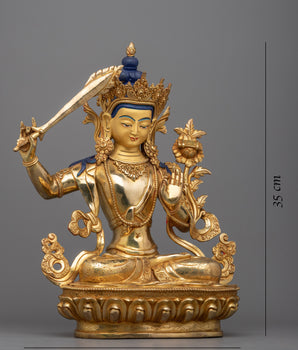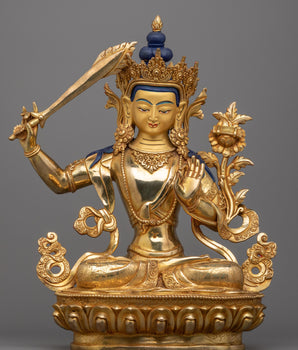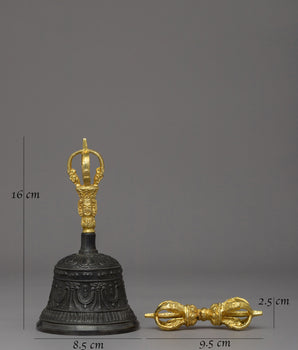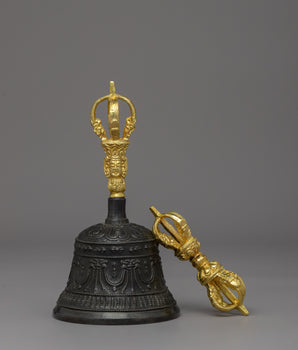The Symbolic Practice of the Seven-Bowl Offering
The seven-bowl water offering holds great significance in Vajrayana Buddhism, especially in Tibetan traditions. At first glance, it is a simple practice: seven small bowls filled with clean water are placed on a shrine or altar. Yet, the symbolism behind this ritual is profound. The seven-bowl water offering serves multiple purposes: it honors enlightened beings, cultivates a mind of generosity in the practitioner, purifies negative karma, and creates conditions for realization, making it a meaningful practice. The offering of water in seven bowls is one of the more accessible daily rituals, requiring little more than devotion, mindfulness, and clean water.
This read delves deeply into the meaning behind the seven bowl water offerings in Vajrayana, examining the ritual’s origins, the symbolism of each bowl, and how modern-day practitioners can integrate this practice into their spiritual routines. By the end, you will gain a comprehensive understanding of why this tradition has persisted for centuries, continuing to motivate both new and experienced practitioners, whether monastic or lay.
Looking Back Into the Seven-Bowl Water Offering Tradition

The practice of making offerings to the Buddha and his enlightened followers dates back to the early days of Buddhism. Devotees would place items like flowers, incense, and lamps in front of Buddha statues as a sign of respect and devotion. This tradition often took place at stupas and monasteries. The reasons behind these offerings were twofold: to generate merit through acts of generosity and to foster a deep sense of reverence for the Three Jewels—Buddha, Dharma, and Sangha.
Why Water? The Significance of Purity
Water holds significant importance in Buddhist practice, extending far beyond mere offerings. It often symbolizes clarity, purity, and the essential sustenance of life. In various Buddhist teachings, our natural mind is compared to water: fundamentally pure yet easily clouded by negative emotions and confusion. By offering clean water, we:
-
Reflect Purity: It represents the untainted essence of reality and a mind that is free from impurities.
-
Demonstrate Generosity: Offering water shows generosity and builds merit in Tibetan traditions.
-
Cultivate Mindfulness: Filling each bowl carefully encourages meditative awareness in daily routines.
-
Embody Respect for Precious Resources: In the Tibetan highlands, water is a vital, sometimes scarce resource, reminding practitioners not to take it for granted.
Within Vajrayana Buddhism, material elements (earth, water, fire, air, space) play a crucial role in tantric symbolism. Water, in particular, symbolizes fluidity and purification. The act of offering water serves as a powerful reminder of the transformation we aspire to achieve: to eliminate ignorance and emerge as enlightened beings, fully embodying compassion and wisdom.
Symbolism of the Seven Bowls

The practice of offering the seven bowls is frequently associated with the Seven-Limbed Practice, also referred to as the Seven-Limb Prayer or Seven-Limbed Offering, which is a well-known devotional practice in Vajrayana Buddhism. This practice encompasses offerings and actions aimed at purifying negative karma, accumulating merit, and fostering a positive mindset. The seven bowls, commonly utilized in rituals, correspond with this practice by representing different facets of respect, devotion, and purification.
In the Seven-Limbed Practice, the seven actions typically include:
- Prostration: Showing respect and humility.
- Offering: Making offerings, such as the seven bowls.
- Confession: Acknowledging and purifying past negative actions.
- Rejoicing: Rejoicing in the merits and virtues of others.
- Requesting: Asking for guidance and blessings from the Buddhas and bodhisattvas.
- Beseeching: Seeking the removal of obstacles and the fulfillment of spiritual wishes.
- Dedication: Dedication of merit to the benefit of all sentient beings
The seven bowls symbolize the "offering" limb or aspects in this practice of Yonchap , with each bowl representing a distinct offering of elements such as water, food, flowers, and light. These tangible offerings help cultivate positive qualities, express gratitude, and generate merit. While the Seven-Limbed Practice serves as a more comprehensive spiritual framework, the Seven Bowls are frequently utilized in the offering component of this practice. The symbolism of the revered seven-bowl water offering set are:
- First Bowl: Fresh drinking water (Argham) to quench thirst after a long journey and to rinse the mouth.
- Second Bowl: Water to bathe (Padyam) the feet, as a sign of respect and service.
- Third Bowl: Flowers (Pushpa) to honor the guest, representing vibrant beauty and offering visual pleasure.
- Fourth Bowl: Aromatic incense (Dhupe) to purify the environment, welcome guests, and please the sense of smell.
- Fifth Bowl: Oil or butter lamp (Aloke), symbolizing the illumination of wisdom, dispelling ignorance and mental obscurity.
- Sixth Bowl: Rosewater or perfumed water (Ghande), symbolizing fragrance and offering a pleasant aroma.
- Seventh Bowl: Food (Naivedya) to honor and nourish guests, representing abundance and hospitality.
The Seven Bowl Water Offering is a meaningful ritual that represents respect, hospitality, and spiritual practice. Each offering is a way to express devotion, cleanse the mind and body, and foster positive qualities like wisdom, compassion, and generosity. By approaching these offerings with mindfulness and reverence, practitioners honor the Buddhas and bodhisattvas while strengthening their connection to the path of enlightenment. The Seven Bowl Offering reminds us of the virtues we aim to embody and the interconnectedness of all beings.
How to Perform the Seven Bowl Water Offering
Here are the steps for performing the Seven Bowl Water Offering in detail:
1. Setting Up the Altar
A clean, stable surface is essential for your altar. Traditionally, one might have a statue or image of the Buddha (or a deity in Vajrayana practice) as the central focus. Arranged in a straight line in front of this main image are the seven bowls. Each bowl should be identical—often shallow, circular bowls about the size of a small teacup.
-
Clean the Bowls: Before placing them on the altar, ensure they are thoroughly rinsed to maintain symbolic purity.
-
Spacing: When placing the bowls in a row, leave roughly the width of a single grain of barley between them. This fosters mindfulness and a sense of precision.
2. Filling the Bowls
-
Morning Ritual: Many Vajrayana practitioners fill the bowls in the morning as part of a daily routine.
-
Methodical Process: Start from the leftmost bowl (representing water for washing) and pour water slowly. Move to the next bowl without crossing your arm over any bowls (to maintain a mindful and respectful posture).
-
Visualization: As you fill each bowl, visualize the water transforming into the offering it represents—flowers, incense, light, and so on.
-
Recitation: Some traditions encourage chanting a short offering mantra or prayer while filling the bowls, invoking blessings.
3. Post-Offering Activities
After the offerings are arranged, they are consecrated by dipping a stem of kusha grass into the water vessel and sprinkling the offerings. The syllables Om A Hum are recited either three or seven times.
4. Concluding the Offering
-
Evening or Next-Day Ritual: At the end of the day or the following morning, the water is carefully removed from the bowls. Typically, the water is poured into a clean place—some practitioners water plants or place it outside in a respectful area, returning it to nature.
-
Cleaning Bowls Again: Rinse each bowl thoroughly and either invert them overnight (upside down to remain clean) or store them for the next use.
By placing the bowls and removing them mindfully, one develops a daily rhythm that fosters both devotion and mental clarity. Over time, this simple gesture of filling and offering water becomes a deeply ingrained meditative practice.
Choose Your Seven-Bowl Water Offering Set from EvamRatna
At EvamRatna, we proudly present a selection of handpicked Nepalese handicrafts that beautifully reflect the rich cultural heritage and diverse traditions. Our Seven Bowl Water Offering Set perfectly captures the spiritual essence of Nepal, crafted with care and respect. Each piece showcases the time-honored skills of Nepalese artisans, providing you with not just a ritual offering but also a meaningful connection to the sacred practices of Vajrayana Buddhism.
By choosing our set, you welcome the purity, grace, and spiritual depth of Nepal into your home, enriching your practice with a beautiful and significant artifact. Join us in honoring tradition, art, and culture, and enhance your spiritual journey with the beauty of Nepal. Here are our top options of seven-bowl water offering set for you alter:
1. Brass Bowls

These handmade brass bowls for water offering is meticulously crafted with precision and care. Crafted from brass with a total weight of 0.71 kg, each bowl embodies the essence of devotion and reverence in ceremonial practices.
2. Gold-Plated Copper Offering Bowl Set

This gold-plated copper offering bowl set has been exquisitely created by the skills of traditional Nepalese workmanship. Each of the bowls have a diameter of 13 cm, a height of 11.5 cm, and a weight of 4.54 kg. The elaborate pattern and exquisite details capture the profound cultural meaning of offering bowls in Tibetan Buddhist ceremonies, making it a treasure addition to devotees and collectors.
3. Silver Offering Bowls

These high-quality silver bowls are 4.5cm tall, 9.2cm in diameter, and 3.5cm deep each, making them suitable for holding offerings. They showcase exclusive Nepalese craftsmanship, as each bowl is lightweight but sturdy. They will bring peace, harmony, and positive energy to your space.
Explore more options of Seven-Bowl Water Offering sets by EvamRatna for your altar.


